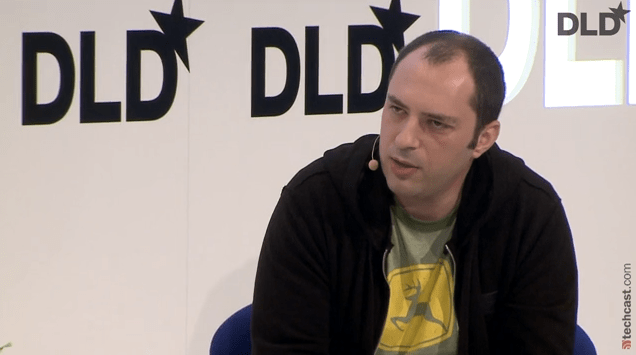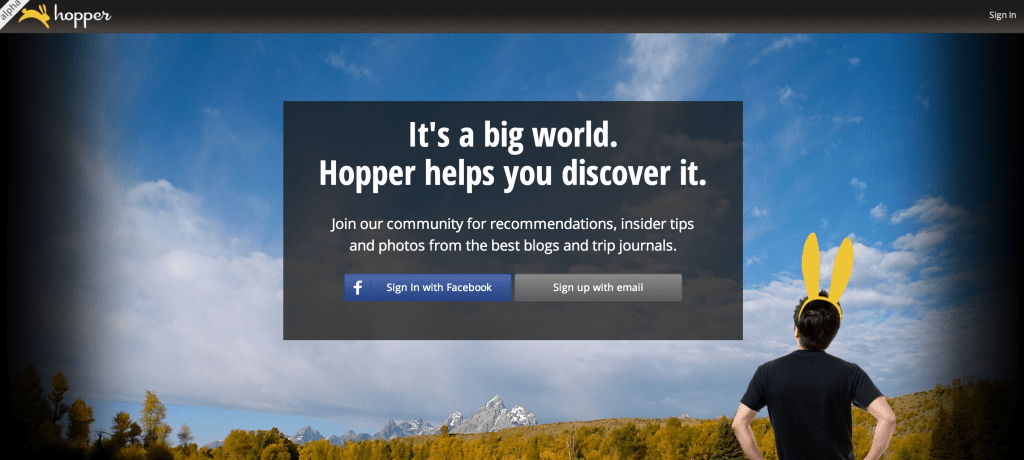
Hopper CEO Frederic Lalonde is bemused by the coverage of his travel startup’s “launch,” which supposedly took place this past week, according to various news stories. The company, reportedly in stealth for six years, had just now opened its doors, it was proclaimed. Not quite, says Lalonde. “The site, Hopper.com, has been live since early last spring,” he tells us, noting it has since seen millions of visitors. But around two weeks (not days) ago, the company opened up access directly from the Hopper.com homepage.
As it turned out, that was enough to draw people’s interest. The company, which was founded back in 2007 and has been operating in stealth for some time, had been working on a “big data” solution to the challenges surrounding travel discovery. Still, it’s been more of a gradual launch, rather than a sudden opening of its doors.
If you look in Google, for example, there are 1.5 million Hopper.com search results in the Google index, and the service has gotten around 2 million impressions from Google, plus over 1 million from Facebook, we’re told. “Users have been flowing through the Hopper since most of last year,” says Lalonde, discussing the site’s traffic and growth.
Today, the consumer-facing travel startup founded by former Expedia engineers and backed by $22 million in venture funding now offers site visitors who create an account access to its trip-planning engine, which the company claims is powered by the “world’s largest structured database of travel information.”
 We first covered Hopper when the company had raised its $12 million Series B from OMERS Ventures, Brightspark Ventures, and Atlas Venture, but the company had declined to then go into much detail about the product it had in store. The founding team at the time included former Expedia engineers, with CEO Frederic Lalonde, co-founder and CTO Joost Ouwerkerk, André Coudé, and Mathieu Patenaud on board. (CMO Dena Yahya Enos, previously of TripAdvisor, has since left the company to become VP of Marketing at Carbonite, according to LinkedIn.)
We first covered Hopper when the company had raised its $12 million Series B from OMERS Ventures, Brightspark Ventures, and Atlas Venture, but the company had declined to then go into much detail about the product it had in store. The founding team at the time included former Expedia engineers, with CEO Frederic Lalonde, co-founder and CTO Joost Ouwerkerk, André Coudé, and Mathieu Patenaud on board. (CMO Dena Yahya Enos, previously of TripAdvisor, has since left the company to become VP of Marketing at Carbonite, according to LinkedIn.)
Why So Slow?
Has Hopper really been working on its database of structured travel content since 2007? Apparently so, slowly and surely.
“What’s really been taking time is the data collection,” Lalonde explains. “We aggregated 2 billion webpages…we ended up realizing there was this huge amount of amazing content that was being produced on blogs.”
The problem is that this data was basically unstructured. It’s just sitting there, not even well-ranked on Google, since many of the bloggers aren’t “authorities” on travel or professional writers, but rather regular people posting photos and sharing stories about their trips, often on non-travel related blogs, too.
So what Hopper built is proprietary technology that not only goes out and crawls the web to find those sites, it can also help to identify that a post is interesting, written by a real human, and is not spam or “content farm” content. It can also break up a longer post about multiple destinations or attractions into smaller pieces, and each of these bite-sized travel experiences can be then associated with the correct geo-location.

Oh, and that’s the other thing Hopper had to create; in order to add all those interesting travel stories and photos to specific items in a place database, they needed one of those, too. “You need to know pretty much everything on Earth about travel. You need to know where everything is,” says Lalonde. “It’s akin to building maybe 10 to 20% of what Google has in Google Maps, and we had four engineers working on this problem.”
But thanks to the Series B and earlier rounds, most of which is still in the bank, Hopper’s backend is up and running, crawling the web, finding the travel posts, pulling out what’s interesting, having those reviewed by human editors, then adding those pieces of content to its site. Of the 2 billion total pages crawled to date, less than 1 percent are good enough to make it to Hopper.com.
In January of this year, new pieces of content were being added at a rate of 200 per day. Now, the current rate of production is 2,000 per day, and they’re hoping to grow that to 5,000 per day soon, as the team scales from 20 editors to 50 by March. This would put Hopper on a rate of growth of something like TripAdvisor, says Lalonde.
For consumers, Hopper.com, which anyone can now access, is a well-built, travel-planning utility which allows you to search for places and activities from around the world. Every page on the site is annotated with information about the attraction or locale, including maps, directions, URLs, details on flights and prices, photos, related destinations, and more.
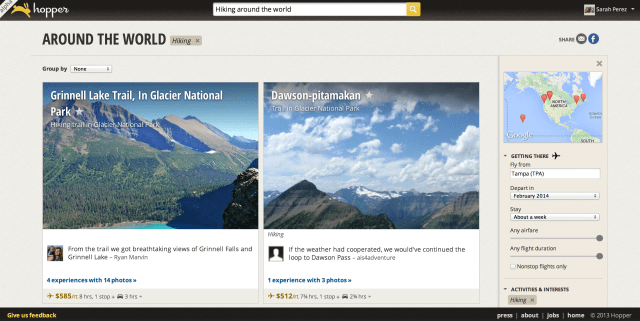
What’s interesting about the service is its focus on discovery. You can search for any place or even any activity (e.g. hiking, skiing, surfing, etc.) to find inspiration about where to travel and what to do. It’s not trying to compete with the services whose main goal is to sell you a flight, hotel or car rental, the CEO explains. For now, it’s about building a great user experience around travel discovery, with the ability to then search for flights as the secondary step.
However, to make this happen, Hopper also had to close deals with flight data providers (the three main companies that compete with Google/ITA) to get access to their data for free – deals that took two years to close, also slowing things down. But now, because of Hopper’s visibility into flight search activity, it can see about a billion flight prices searched by real people in real-time. This can help Hopper offer current flight search results on its site, but it also allows the company to track trends in consumer shopping behavior, or show how an event (like the Polar Vortex, or the Olympics) is impacting travel. This data is provided through Hopper’s Research arm, which takes journalists’ requests.
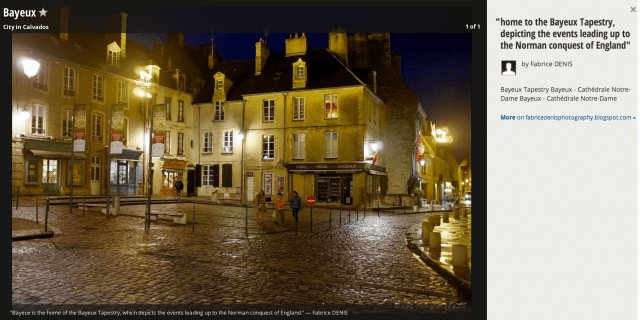
Going forward, the real business for Hopper may not be in its consumer-facing service, or even its forthcoming mobile apps, but in offering developers programmatic access to the Hopper data store. “Travel APIs have stayed static for almost over two decades, and the data we have has never been collected,” says Lalonde. He thinks the developer API will certainly appeal to startups, but also potentially bigger businesses who come up with use cases they haven’t even thought of before.
Now a team of 30 people, Hopper only started to speed things up since its move to Boston a couple of years ago. “People forget, the world exploded in 2008. There was a very long period where we didn’t want to burn any of the initial seed capital that we raised,” explains Lalonde. “We didn’t want to grow, because we knew it was a very risky thing we were doing.”
Hopper.com will release a new version of its site by the end of winter, and promises mobile apps “soon.”






 The Internets are ablaze this morning after comments from HBO’s CEO about users sharing their HBO Go accounts. According to most reports out there today, the company couldn’t care less who you share your account with. Share your account with everyone! Free love forever! Hurray!
The Internets are ablaze this morning after comments from HBO’s CEO about users sharing their HBO Go accounts. According to most reports out there today, the company couldn’t care less who you share your account with. Share your account with everyone! Free love forever! Hurray!






 Mahler adds that he believes Pinterest works best when pinned products are actually available for purchase. As it turns out, this has been a problem with Pinterest for some time. According to mobile commerce vendor Branding Brand, almost 60 percent of Pinterest traffic to retailers’ sites during the 2013 holidays came from those in search of a product that doesn’t exist anymore. And this figure has been over 50 percent since the service launched. Of course, pinning real-world items to Pinterest doesn’t necessarily solve that problem. Eventually, those items could also disappear while Pinterest continues to recycle their links.
Mahler adds that he believes Pinterest works best when pinned products are actually available for purchase. As it turns out, this has been a problem with Pinterest for some time. According to mobile commerce vendor Branding Brand, almost 60 percent of Pinterest traffic to retailers’ sites during the 2013 holidays came from those in search of a product that doesn’t exist anymore. And this figure has been over 50 percent since the service launched. Of course, pinning real-world items to Pinterest doesn’t necessarily solve that problem. Eventually, those items could also disappear while Pinterest continues to recycle their links.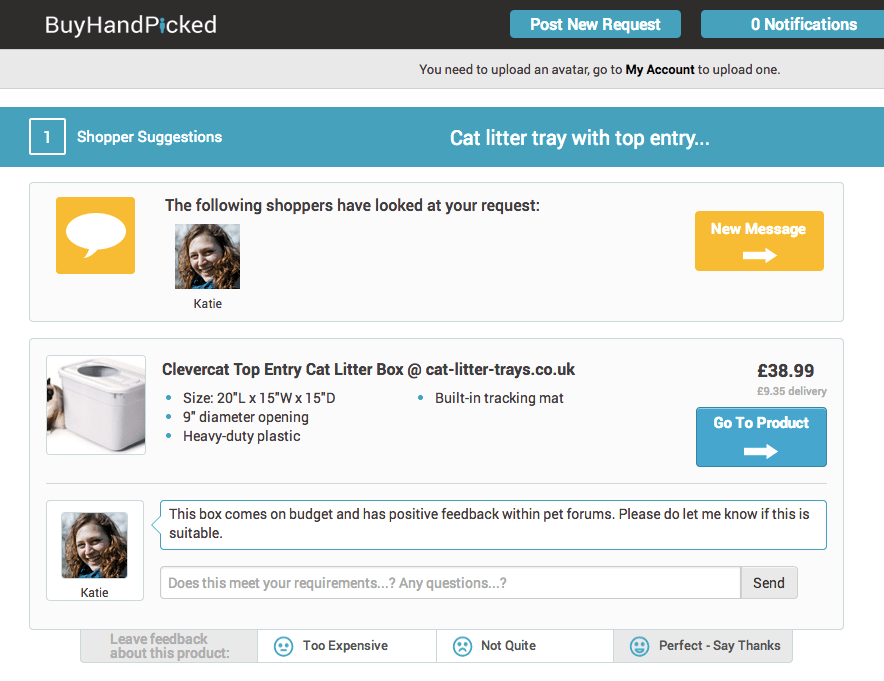



 We first covered Hopper when the company had
We first covered Hopper when the company had 





